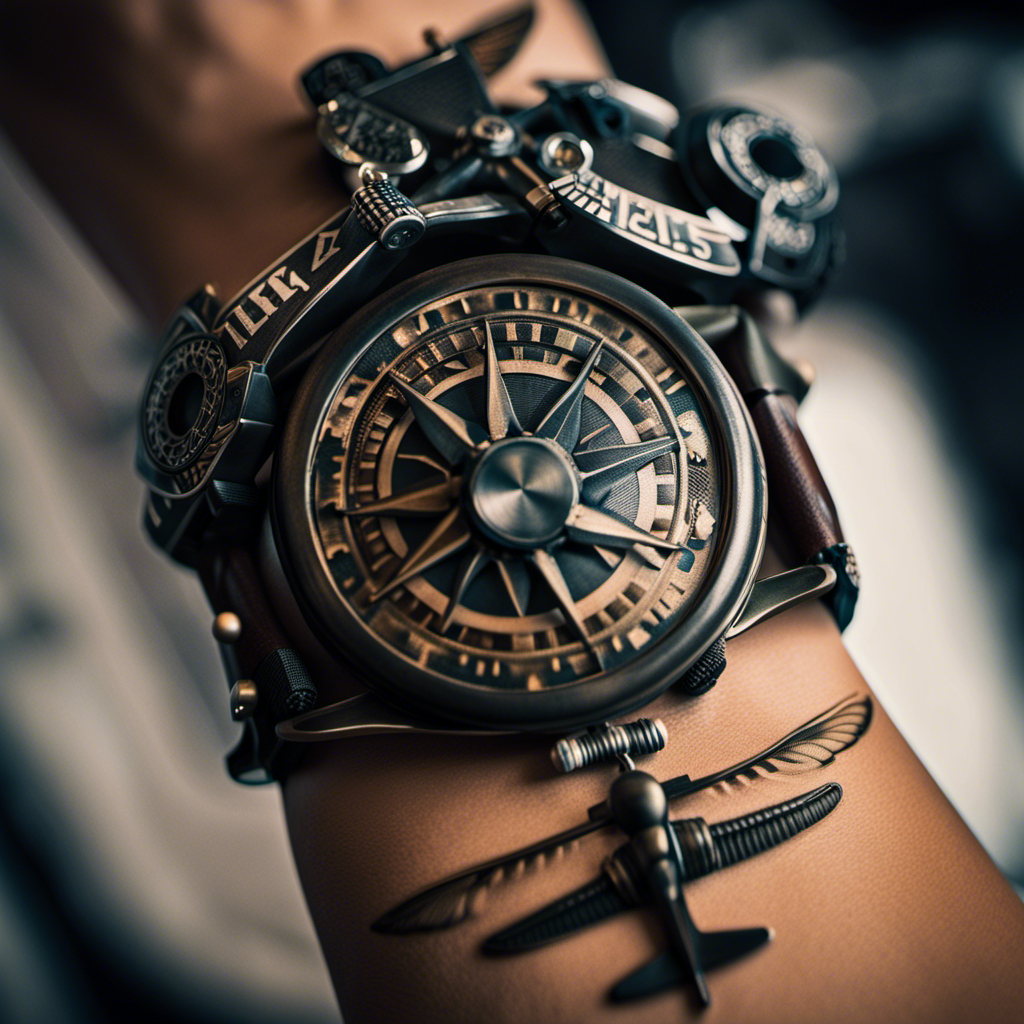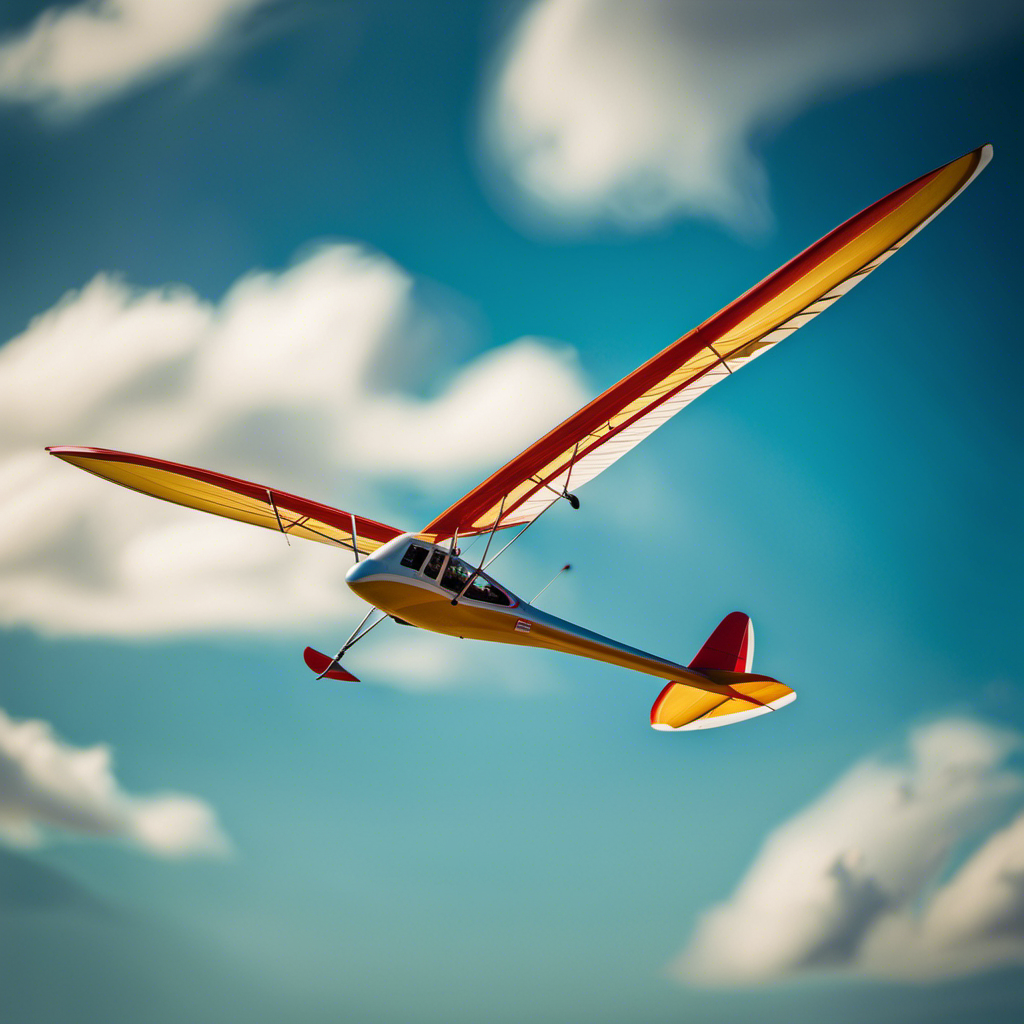As a pilot, I have always been interested in the policies and regulations concerning tattoos in the aviation industry. Are pilots allowed to have tattoos? This question is significant both personally and professionally.
In this article, we’ll explore the history of tattoo policies for pilots, the importance of safety and uniformity, and the current stance of airlines on tattoos. We’ll also delve into cultural and social considerations, as well as the potential future of tattoo policies for pilots.
So, let’s dive in and uncover the truth behind this intriguing topic.
Key Takeaways
- Tattoo policies for pilots have evolved over time, reflecting changing societal norms and acceptance of tattoos.
- The aviation industry is becoming more inclusive and accepting of tattoos, recognizing the importance of cultural diversity.
- Safety and uniformity are still important in the industry, but there is also recognition of the role of personal expression through tattoos.
- Airlines have their own tattoo policies, and individual discretion plays a role in determining whether a pilot can have visible tattoos.
Professional Appearance in the Aviation Industry
You should be aware that professional appearance standards in the aviation industry may affect whether or not pilots are allowed to have visible tattoos. Cultural implications and changing attitudes towards tattoos have led to a shift in how the industry perceives them.
In the past, tattoos were often associated with rebellion and nonconformity, which clashed with the strict and professional image that pilots were expected to uphold. However, as societal views on tattoos have evolved, so have the policies in the aviation industry.
Many airlines now allow visible tattoos as long as they are not offensive or excessive. This change reflects a more inclusive and accepting approach towards personal expression. Understanding the history of tattoo policies for pilots provides valuable insight into the industry’s progression in embracing diversity and individuality.
The History of Tattoo Policies for Pilots
In the past, it hasn’t always been common for aviation authorities to allow tattoos for pilots. However, with changing attitudes and a greater acceptance of personal expression, uniform regulations regarding tattoos have started to evolve.
Here are three key points to consider:
-
Relaxing of Restrictions: Many aviation authorities have begun to relax their strict tattoo policies. While visible tattoos were once prohibited, they are now often allowed as long as they are not offensive, extremist, or excessive.
-
Individual Assessment: Some aviation authorities now consider tattoos on a case-by-case basis. They take into account the size, location, and content of the tattoo, as well as the overall professional appearance of the pilot.
-
Changing Perceptions: There is a growing recognition that tattoos do not affect a pilot’s ability to perform their duties safely and professionally. As society becomes more accepting of body art, the aviation industry is adapting to reflect these changing perceptions.
With the increasing acceptance of tattoos among pilots, it is important to consider the importance of safety and uniformity in the aviation industry.
The Importance of Safety and Uniformity
With the importance of safety and uniformity in mind, it’s crucial to maintain consistent regulations within the aviation industry.
Safety is paramount in the world of aviation, and standardization and conformity play a vital role in achieving this. Consistent regulations ensure that all pilots, regardless of their personal choices or preferences, adhere to the same set of guidelines. This ensures that there is no compromise when it comes to safety procedures and protocols.
By enforcing uniformity, the aviation industry can guarantee that all pilots are trained and equipped to handle any situation that may arise.
Now, let’s delve into the specific policies that airlines have regarding tattoos and how they address this issue.
Airlines’ Tattoo Policies
The aviation industry’s stance on tattoos varies among different airlines. While some airlines have strict policies against visible tattoos, others may have more lenient guidelines. Pilot appearance is an important aspect of the industry, as it reflects professionalism and adherence to industry standards. To provide a visual representation of the diversity in tattoo policies, here is a table showcasing the tattoo policies of four major airlines:
| Airline | Tattoo Policy |
|---|---|
| Airline A | No visible tattoos allowed |
| Airline B | Tattoos must be covered while on duty |
| Airline C | Small, tasteful tattoos allowed |
| Airline D | No specific policy on tattoos |
It is important for pilots to be aware of their respective airline’s policies on tattoos and ensure that they comply with them. Now, let’s explore the cultural and social considerations surrounding tattoos in the aviation industry.
Cultural and Social Considerations
Cultural and social considerations play a significant role in determining the acceptability of visible tattoos in the aviation industry. With cultural diversity being a prominent aspect of our society, it is important to understand and respect different perspectives on body art acceptance.
While some cultures may view tattoos as a form of self-expression and art, others may associate them with negative connotations or even consider them taboo. In the aviation industry, where professionalism and safety are paramount, airlines must strike a balance between honoring cultural diversity and maintaining a certain image.
As attitudes towards tattoos continue to evolve, it is crucial for airlines to adapt their policies accordingly. The impact of changing attitudes towards tattoos in the aviation industry can be seen in the growing acceptance of visible body art among both passengers and crew members.
The Impact of Changing Attitudes
As society’s views on body art evolve, the aviation industry must adapt its policies to accommodate changing attitudes towards visible tattoos.
In recent years, there has been a shift in societal norms regarding tattoos, with an increasing acceptance and appreciation for this form of self-expression. This shift can be attributed to the cultural diversity that exists within our society, as different cultures have different perspectives on body art.
The aviation industry recognizes the importance of embracing this diversity and creating an inclusive environment for both employees and passengers. As a result, many airlines have revised their policies to allow visible tattoos, as long as they are not offensive or excessive.
This change reflects the industry’s commitment to adapt to the changing times and embrace the rise of acceptance and inclusion.
The Rise of Acceptance and Inclusion
The changing attitudes towards tattoos have led to a rise in acceptance and inclusion in various professions, including the aviation industry. As society becomes more diverse, there is a growing recognition of the importance of embracing individuality and celebrating differences. This shift in mindset has had a direct impact on the perception of tattoos among pilots.
Here are three reasons why there has been a rise in acceptance and diversity:
-
Changing cultural norms: Society is becoming more open-minded, recognizing that personal appearance does not affect one’s ability to perform their job effectively.
-
Increased emphasis on diversity and inclusion: Companies are actively promoting diversity and inclusion in their workforce, creating an environment that values uniqueness.
-
Understanding the role of personal expression: Tattoos can be seen as a form of self-expression, allowing individuals to showcase their personal beliefs and experiences.
With the rise of acceptance and diversity, it becomes essential to explore the role of personal judgment and discretion when it comes to tattoos in the aviation industry.
The Role of Personal Judgement and Discretion
When it comes to personal judgment and discretion, you should consider the impact of tattoos on your professional image in the aviation industry.
While personal freedom is important, it is also crucial to understand the societal norms and expectations within this particular field. The aviation industry has traditionally upheld a more conservative image, and visible tattoos may not align with these standards.
It is essential to recognize that certain airlines and employers have strict policies regarding tattoos, especially those that are visible while in uniform. As a pilot, it is important to consider the potential impact of your tattoos on your career prospects and professional reputation.
However, it is worth noting that attitudes towards tattoos are evolving, and some airlines are becoming more accepting.
Transitioning into the subsequent section about temporary tattoo solutions, it is important to explore ways to maintain professionalism while expressing personal style.
Temporary Tattoo Solutions
One option for maintaining professionalism while expressing personal style in the aviation industry is to consider temporary tattoo solutions.
Temporary tattoos offer a convenient way to showcase your personality without permanently altering your appearance. These tattoos are easily applied to the skin and can be customized to suit your preferences. They come in a variety of designs and sizes, allowing you to find the perfect temporary tattoo that aligns with your personal style.
Additionally, temporary tattoos can be easily removed using simple techniques, such as rubbing alcohol or baby oil. This ensures that you can easily transition between a professional appearance and expressing your personal style outside of work.
Now, let’s explore some cover-up options that can be used to maintain a professional image in the aviation industry.
Cover-Up Options
To maintain a professional image in the aviation industry, you can consider using cover-up options to hide your tattoos.
While tattoo removal is a permanent solution, it can be expensive and time-consuming. Instead, cover-up options provide a temporary solution that allows you to comply with tattoo regulations while flying.
Many companies offer specially designed makeup or clothing that can effectively conceal tattoos. These products are designed to be long-lasting and resistant to smudging or fading.
Additionally, some airlines may provide guidelines on what is acceptable for covering tattoos. It is important to note that the role of individual airlines’ discretion plays a significant role in determining whether cover-up options are sufficient.
Therefore, it is advisable to check with your specific airline to ensure compliance with their regulations.
The Role of Individual Airlines’ Discretion
If you want to know if your cover-up options are sufficient, it’s essential to check with your specific airline to ensure compliance with their regulations.
Tattoo discrimination in the workplace has been a contentious issue, and it extends to the aviation industry as well. While some airlines have strict policies that prohibit visible tattoos, others are more lenient and allow personal expression.
It is important to note that each airline has its own set of rules regarding tattoos for pilots. Some may require pilots to cover up their tattoos with long-sleeved shirts or makeup, while others may not have any specific restrictions.
As the industry evolves, it will be interesting to see how tattoo policies for pilots change and adapt to accommodate personal expression without compromising professionalism.
The Future of Tattoo Policies for Pilots
As we have seen, individual airlines have the discretion to set their own policies regarding tattoos for pilots. However, the future of tattoo policies for pilots is not solely dependent on the airlines.
There are changing regulations and evolving attitudes that are shaping the landscape as well. Here are some key factors to consider:
-
Regulatory bodies: Aviation authorities may revise their guidelines to reflect a more inclusive approach towards tattoos, aligning with societal changes.
-
Industry standards: Collaborative efforts among airlines and pilot associations can lead to the establishment of industry-wide guidelines for tattoos.
-
Public perception: The influence of public perception cannot be underestimated. As societal attitudes towards tattoos continue to evolve, it may put pressure on airlines to review their policies.
-
Pilot shortage: The increasing demand for pilots could also impact tattoo policies, as airlines may become more flexible to attract and retain qualified candidates.
With these factors in mind, let’s explore the influence of public perception on the future of tattoo policies for pilots.
The Influence of Public Perception
Consider how public opinion can shape the future of tattoo policies for pilots, as societal attitudes towards body art continue to evolve.
Public perception plays a significant role in determining what is considered acceptable in society, and this includes the acceptance of tattoos. In recent years, there has been a shift in societal norms, with tattoos becoming more mainstream and accepted.
As a result, the perception of tattoos among the general public has changed, and many people now view them as a form of self-expression rather than a sign of rebellion or deviance. This change in public perception has the potential to influence the policies surrounding tattoos for pilots.
Pilot associations and advocacy efforts have recognized this shift and are actively working towards advocating for more lenient tattoo policies within the aviation industry.
Pilot Associations and Advocacy Efforts
As discussed in the previous section, public perception plays a significant role in determining whether or not pilots can have tattoos. However, it is important to note that pilot associations and their advocacy efforts also have a significant impact on this matter.
Pilot associations, such as the Air Line Pilots Association (ALPA) and the International Federation of Air Line Pilots’ Associations (IFALPA), play a crucial role in representing the interests of pilots worldwide. These associations work tirelessly to advocate for the rights and needs of pilots, including addressing issues related to personal appearance and tattoos.
Through research, education, and lobbying efforts, pilot associations strive to promote a more inclusive and accepting environment for pilots with tattoos. They also collaborate with airlines, regulatory bodies, and industry stakeholders to develop comprehensive guidelines and policies regarding tattoos in the aviation industry.
Conclusion and Final Thoughts
To wrap things up, it’s worth noting that pilot associations and their advocacy efforts are instrumental in driving the conversation about the acceptance of tattoos in the aviation industry.
These associations work tirelessly to promote professionalism and safety within the industry, including the pilot appearance. While there are currently no industry-wide standards regarding tattoos, many pilot associations have been pushing for more acceptance and flexibility in this area.
They understand that tattoos are becoming increasingly common in society and that they do not affect a pilot’s ability to perform their job safely and effectively. As a result, some airlines and aviation organizations have started to relax their policies on visible tattoos.
However, it’s important to note that individual airlines still have the final say on their own appearance standards, so it’s always advisable for pilots with tattoos to check with their specific airline before making any assumptions.
The conversation about tattoos in the aviation industry is ongoing, and pilot associations will continue to play a vital role in shaping industry standards and practices.
Frequently Asked Questions
Are there any specific regulations regarding the size or placement of tattoos for pilots?
There are specific regulations regarding tattoo size and placement for pilots. These regulations ensure that tattoos are not visible when pilots are in uniform. The size and placement restrictions vary depending on the airline or military branch.
What happens if a pilot gets a tattoo after being hired by an airline with a strict tattoo policy?
If a pilot gets a tattoo after being hired by an airline with a strict tattoo policy, they may be required to remove or cover it. Tattoo removal options include laser treatments or surgical excision. However, this could impact their job prospects in the future.
Can pilots with visible tattoos still be considered for promotion or advancement within the aviation industry?
Yes, pilots with visible tattoos can still be considered for promotion or advancement within the aviation industry. However, it is important for them to adhere to professional appearance standards and ensure their tattoos are not offensive or inappropriate.
Do airlines take into account the cultural or social significance of tattoos when enforcing their policies?
Airlines may consider the cultural or social significance of tattoos when enforcing their policies on pilots. With changing attitudes towards tattoos and increased cultural acceptance, some airlines may be more lenient in their tattoo policies.
How do temporary tattoo solutions compare to cover-up options in terms of meeting airline tattoo policies?
Temporary tattoo solutions can be a viable option for pilots who want to meet airline tattoo policies. They provide a convenient and temporary way to cover up tattoos, offering flexibility and ease compared to more permanent tattoo cover-up options.
Conclusion
In conclusion, the aviation industry has traditionally had strict policies regarding tattoos. However, there is a growing acceptance and understanding of individuality among pilots. Like a tapestry woven with various threads, the future of tattoo policies for pilots is becoming more colorful and diverse.
Pilot associations and advocacy efforts play a crucial role in shaping these policies. They consider both safety and cultural factors. These organizations work to ensure that pilots can express themselves while also maintaining a safe and professional environment.
Ultimately, as public perception continues to evolve, the aviation industry will adapt. It will embrace the uniqueness and personal expression of its pilots. This shift in attitude reflects a broader societal acceptance of tattoos and individuality.
With a heart that soars as high as the skies, Aria, affectionately known as “Skylark,” is the driving force behind Soaring Skyways. Her journey into the gliding world began as a young dreamer gazing up at the soaring birds, yearning to experience the weightlessness and freedom they embodied. With years of experience both in the cockpit and behind the scenes, Aria’s commitment to the gliding community is unwavering.










